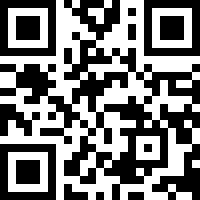By: Camille Dang
Expansion of Insurance Coverage for Telehealth and RPM Due to the Pandemic
When the coronavirus started rapidly spreading in the world, it was clear that change was coming— undoubtedly in social and economic fronts. The usage of face masks became extremely widespread and the “6 feet apart” social distancing policy was practiced in all parts of the globe. However, in a perhaps less obvious way, the healthcare industry has been altered forever due to the pandemic, most notably because of the recent expansion of insurance coverage for telehealth and remote patient monitoring.
On 6 March 2020, the Centers for Medicare & Medicaid Services (CMS), issued an expansion of coverage for telehealth in response to the Covid-19 pandemic through the 1135 waiver under the Social Security Act, which allows CMS to pass new rules and regulations based on certain conditions. Since then, telehealth has garnered so much attention due to the increase in its insurance coverage throughout the U.S., with Medicare adding 144 new covered telehealth services, ranging from various providers, including dentists, doctors, and social workers.
Because of this, many more practitioners, rather than the initially limited few, are now allowed to practice telehealth with their patients. CMS also made telehealth even more appealing for healthcare workers when it declared equal pay rates for medical practitioners for both telehealth appointments and in-person appointments.
For beneficiaries, Medicare expanded coverage to telehealth to all patients, regardless of home location. Compared to pre-pandemic regulations, where only beneficiaries who lived in rural areas and had specific conditions and circumstances could receive telehealth appointments, Medicare has no doubt expanded accessibility for telehealth to cover urban areas and include many other conditions. These steps are making telehealth not only increasingly accessible to doctors and clinicians but also patients.
CMS also declared a specific branch of telehealth–i.e., remote patient monitoring, more accessible to new patients. Although RPM is not a new concept, it took the pandemic to kickstart RPM into widespread usage. DrKumo, a telehealth company specializing in remote patient monitoring or RPM, provides, the first of its kind, an effective way of monitoring chronically ill patients continuously via artificial intelligence. Patients utilize various technology-driven medical devices provided by the company to measure vital signs, which devices transmit to doctors and clinicians (and anyone else connected to the patients’ accounts) remotely and in real-time.
Benefits and Effects of RPM and Telehealth on the Healthcare Industry
The rise of the pandemic showed that RPM is not only convenient and effective but in most cases, necessary. With the pandemic still at large in many areas around the world, particularly in the U.S., an increased reliance on telehealth and RPM in the healthcare industry is becoming a new norm for many people. Medicare’s virtual appointments make it so much safer for both patients and doctors as there is no close contact and thus increased risk of transmission of the virus. Furthermore, telehealth is so much more convenient for patients, who can take a doctor’s appointment at the comfort of their living room. RPM is also much more effective as it allows 24/7 continuous monitoring of patients’ vital signs.
Although the pandemic will soon be in our rearview mirror, its effects on humanity and the many industries within society will be seen and heard for generations. RPM and telehealth were introduced more seriously to mainstream healthcare during the pandemic., But even if RPM will no longer be required due to Covid-19 safety concerns, the higher accessibility, convenience, and effectiveness that comes with DrKumo’s highly advanced RPM technology will keep it in the mainstream healthcare for many years to come.


